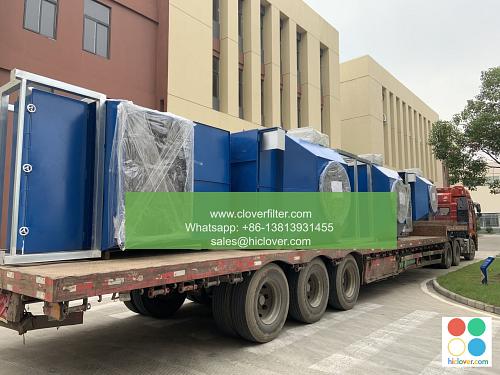Air Filter 101: Understanding MERV, HEPA, and Activated Carbon

As the world becomes increasingly aware of the importance of indoor air quality, the demand for effective air filtration systems has grown exponentially. With a plethora of options available, it can be overwhelming to navigate the different types of air filters and their applications. In this article, we will delve into the world of air filtration, exploring the key concepts of MERV, HEPA, and Activated Carbon, and highlighting their various application areas.
What is MERV?
MERV, or Minimum Efficiency Reporting Value, is a standard used to measure the effectiveness of air filters in removing particles from the air. The MERV rating system ranges from 1 to 20, with higher ratings indicating better filtration performance. MERV 11 and MERV 13 filters are commonly used in commercial and industrial settings, while MERV 16 and MERV 17 filters are typically used in hospitals and other healthcare facilities where high-efficiency air filtration is crucial.
Understanding HEPA Filters
HEPA, or High Efficiency Particulate Air, filters are designed to capture 99.97% of particles as small as 0.3 microns, making them ideal for applications where ultra-fine particle filtration is required. HEPA air purifiers are commonly used in residential, commercial, and industrial settings, including hospitals, labs, and cleanrooms. Some popular types of HEPA filters include True HEPA, HEPA-type, and Activated Carbon HEPA filters, which combine the benefits of HEPA filtration with the odor-removing capabilities of activated carbon.
The Power of Activated Carbon
Activated carbon filters are designed to capture gases, odors, and chemicals from the air, making them ideal for applications where air purification is critical. Activated carbon air filters are commonly used in kitchen ventilation systems, bathroom exhaust fans, and industrial air purification systems. When combined with HEPA filtration, activated carbon filters can provide comprehensive air cleaning solutions for a wide range of applications.
Application Areas for MERV, HEPA, and Activated Carbon Filters
These types of air filters have a wide range of applications, including:
- Residential air purification: MERV 11 and HEPA filters are commonly used in home air purifiers to remove allergens, pet dander, and other airborne particles.
- Commercial air filtration: MERV 13 and HEPA filters are often used in office buildings, restaurants, and shopping centers to maintain good indoor air quality.
- Industrial air purification: Activated carbon and HEPA filters are used in manufacturing facilities, labs, and cleanrooms to remove hazardous chemicals and particles from the air.
- Healthcare: HEPA filters are commonly used in <strong*hospitals, clinics, and other healthcare facilities to prevent the spread of airborne infections.
Conclusion
In conclusion, understanding the differences between MERV, HEPA, and Activated Carbon filters is crucial for selecting the right air filtration system for your specific needs. Whether you’re looking for <strong=residential air purification, commercial air filtration, or industrial air purification, there’s an air filter out there that can meet your requirements. By considering factors such as filter efficiency, application area, and maintenance costs, you can make an informed decision and breathe easy knowing that your air is clean and healthy.
Prompt

